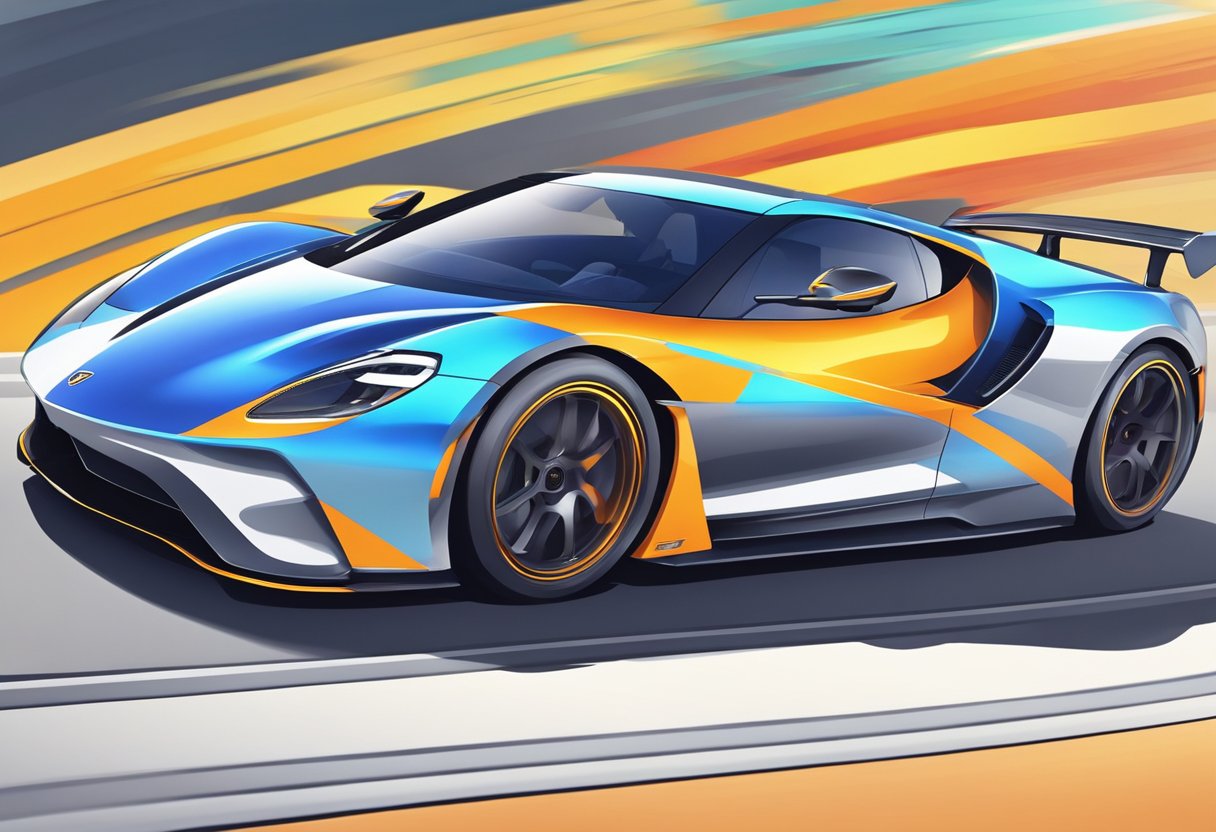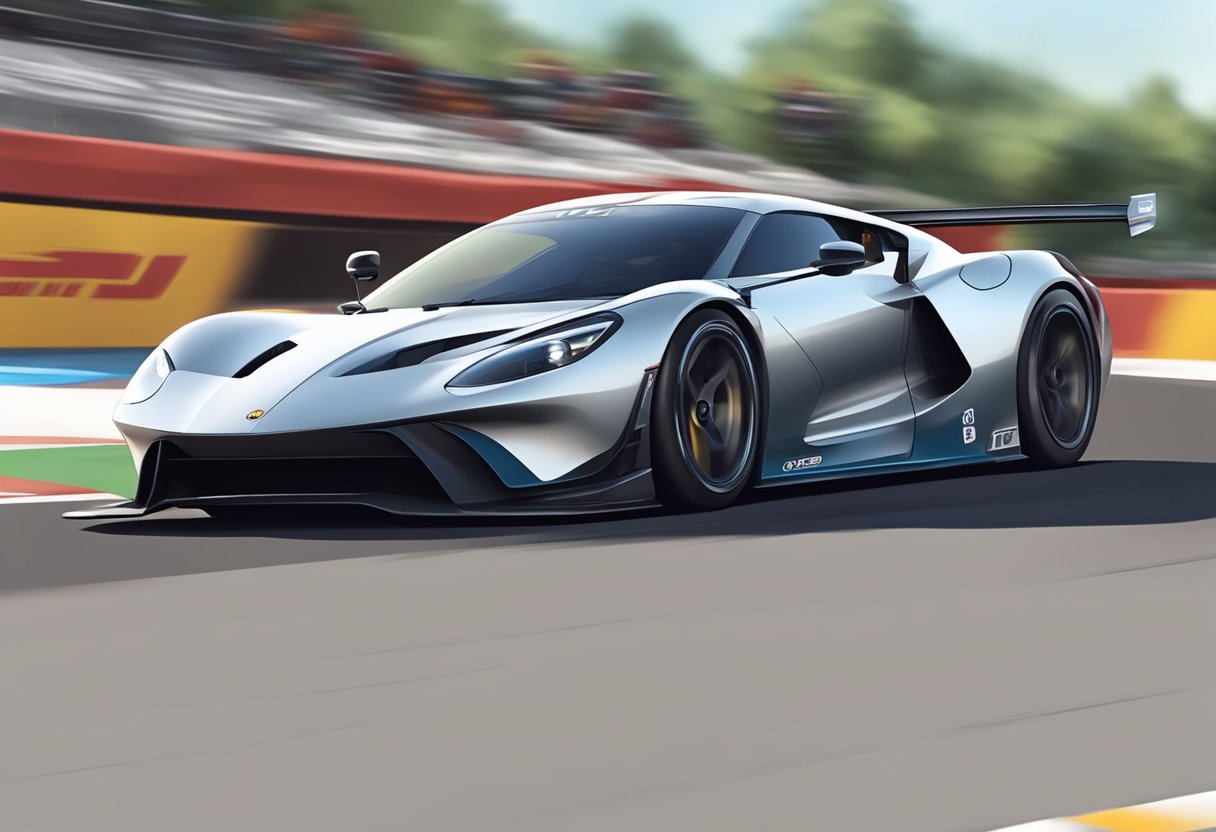If you’re new to the world of motorsports, you may have heard the term “GT cars” thrown around, but what exactly does it mean? GT stands for Grand Touring, which is a type of car that is designed for long-distance driving and racing. These cars are known for their high performance and sleek design, making them a popular choice for racing enthusiasts.
In the world of racing, GT cars are divided into different classes based on their performance capabilities. For example, the GT1 class includes the fastest and most powerful GT cars, while the GT4 class includes more entry-level cars that are designed for amateur racers. Understanding these different classes can be confusing for beginners, but it’s an important part of getting started in the world of GT racing.
One popular video game that has helped to popularize GT racing is Gran Turismo Sport. This game allows players to experience the thrill of racing GT cars on some of the world’s most famous tracks. While playing a video game is no substitute for the real thing, Gran Turismo Sport can be a fun and educational way to learn more about GT cars and racing.
Understanding GT Cars
If you’re new to the world of motorsports, the term “GT car” may be a bit confusing. GT stands for Grand Touring, and it refers to a type of car that is designed for high-speed, long-distance driving. GT cars are typically sports cars that are built for endurance racing, but they can also be used for street driving.
History and Evolution of GT Cars
The history of GT cars dates back to the 1940s and 1950s when manufacturers began building cars that were designed for long-distance travel. These cars were typically large, luxurious vehicles that were capable of traveling at high speeds for extended periods. Over time, the focus shifted from luxury to performance, and GT cars became smaller, lighter, and more aerodynamic.
In the 1960s, GT cars became popular in motorsports, and manufacturers began building cars specifically for racing. The first GT racing category was created in 1962, and it quickly became one of the most popular categories in motorsports. Today, GT racing is divided into several categories, including GT3 and GT4.
GT Racing Categories
GT3 and GT4 are the most common categories in GT racing. GT3 cars are designed for professional racing, and they are typically based on production sports cars. These cars are highly modified for racing, and they are capable of reaching speeds of over 200 miles per hour. GT4 cars, on the other hand, are designed for amateur racing, and they are based on production sports cars that are less heavily modified than GT3 cars.
In addition to GT racing, GT cars are also used in other forms of motorsports, including NASCAR and sports car racing. In NASCAR, GT cars are known as “stock cars,” and they are based on production cars that have been modified for racing. In sports car racing, GT cars are divided into several categories, including GT1, GT2, and GT3.
Overall, GT cars are designed for high-speed, long-distance driving, and they are a popular choice for both racing and street driving. Whether you’re a professional driver or a weekend enthusiast, a GT car is a great choice for anyone who loves speed and performance.
The Basics of Gran Turismo Gaming
Gameplay Overview
Gran Turismo is a popular racing video game series that has been around since 1997. The latest installment, Gran Turismo 7 (GT7), was released in 2022 for PlayStation 5 (PS5). In GT7, you can race in various modes such as Arcade, Campaign, and Sport Mode. Arcade mode allows you to race against the computer or a friend, while Campaign mode is where you can progress through the game’s story and unlock new cars and tracks. Sport mode is where you can compete against other players online.
In GT7, you have the option to drive manually or use auto-drive. If you’re new to racing games, it’s recommended to start with auto-drive to get a feel for the game. Once you’re comfortable, you can switch to manual and have more control over your car.
Navigating the Gran Turismo Interface
When you first start GT7, you’ll be presented with a menu screen. From here, you can access different modes, settings, and options. The menu books, located in the top left corner of the screen, are where you can access the game’s manual, credits, and other information.
The Café is where you can buy and sell cars. You’ll start with a limited selection of cars, but as you progress through the game, you’ll unlock more cars to buy and sell. It’s important to keep an eye on your credits, which are the in-game currency used to buy cars and upgrades.
To get started with GT7, it’s recommended to follow a beginner’s guide such as this one or this one. These guides provide tips and tricks to help you get the most out of the game and avoid common pitfalls.
Building Your GT Car Collection
As you progress through Gran Turismo 7, you’ll want to build up your garage with a variety of cars that can handle different tracks and races. Here are some tips for acquiring new cars and managing your garage.
Acquiring New Cars
There are a few ways to acquire new cars in Gran Turismo 7. One way is to purchase them from the Brand Central dealership. Here, you’ll find a variety of cars from different manufacturers, including Mazda and Audi. You can also unlock new cars by completing races and challenges. Keep an eye out for special events and limited-time offers, as these can be a great way to add new cars to your collection.
When selecting new cars, consider their performance and handling capabilities. Sports cars and supercars are great for high-speed races, while more modest vehicles can be better suited for tight turns and technical tracks. Be sure to also consider the car’s power-to-weight ratio and its overall balance.
Managing Your Garage
Once you’ve acquired a few cars, it’s important to manage your garage effectively. You’ll want to keep your cars in good condition and ensure that you have the right cars for each race or track.
To keep your cars in top shape, be sure to perform regular maintenance and repairs. You can also customize your cars with different paint jobs and upgrades. When it comes to selecting cars for races, consider the track and the race conditions. You may need to switch out cars depending on the race type and difficulty level.
Overall, building a strong GT car collection takes time and effort. By collecting a variety of cars and managing your garage effectively, you’ll be well on your way to becoming a top GT racer.
How Does Speed Compensated Volume in Modern Vehicles Compare to GT Cars for Beginners?
The speed compensated volume in modern vehicles adjusts the audio level based on the vehicle’s speed. This ensures a consistent listening experience, regardless of how fast you’re driving. GT cars for beginners may not have this feature, as they prioritize other performance aspects. It’s a convenience most modern vehicles offer.
Car Customization and Tuning
GT Cars are known for their customization options, and Gran Turismo 7 is no exception. In this section, we’ll explore the different ways you can tune and customize your car to improve its performance and aesthetics.
Performance Upgrades
Tuning your car is a crucial part of improving its performance. You can upgrade various parts of your car to improve its speed, acceleration, and handling. These upgrades can include engine upgrades, transmission upgrades, suspension upgrades, and more.
When upgrading your car, it’s important to keep in mind that a balanced approach is essential. You should aim to improve the engine, handling, and brakes equally. This will ensure that your car performs well across different racing conditions.
One of the most significant upgrades you can make to your car is upgrading the tires. Tires play a crucial role in determining your car’s traction, which is essential for maintaining control while driving. You can upgrade your tires to improve their grip, which will help you take corners more quickly and accelerate faster.
Aesthetic Modifications
In addition to performance upgrades, Gran Turismo 7 also allows you to customize the look of your car. You can choose from a wide range of aesthetic modifications, including decals, body modifications, paints, and more.
One of the most significant customization options is the ability to change the color of your car. You can choose from a wide range of colors, including metallic and pearlescent finishes. You can also add decals and other graphics to your car to give it a unique look.
Overall, car customization and tuning are essential parts of Gran Turismo 7. By upgrading your car’s performance and customizing its look, you can create a car that is truly your own. So get out there and start tuning your car to perfection!
Racing Strategies and Skills
Mastering the Tracks
One of the most important skills you need to develop in GT racing is mastering the tracks. Every track has its own unique layout, corners, and challenges. Therefore, it is important to learn the tracks by heart, understand the driving line, and practice until you can drive it smoothly.
To master the tracks, you need to pay attention to the racing line. The racing line is the fastest and safest way to navigate the track. It is the imaginary line that runs through the corners and turns of the track. By following the racing line, you can maintain your speed and minimize the time you spend on the brakes.
Another important aspect of mastering the tracks is to learn how to take corners. Cornering is a crucial skill in GT racing. You need to know when to brake, how to turn the car, and when to accelerate. To take corners like a pro, you need to brake before the corner, turn in towards the apex, and then accelerate out of the corner.
Improving Driving Techniques
Improving your driving techniques is also important in GT racing. There are many aspects of driving that you need to master, such as handling, braking, and acceleration.
Handling is the ability to control the car while driving at high speeds. You need to be able to feel the car and make quick adjustments to your driving based on its feedback. Braking is another important aspect of driving. You need to know when to brake, how hard to brake, and when to release the brakes.
To improve your driving techniques, you can take on license tests and challenges. These tests and challenges will help you improve your driving skills and prepare you for the races ahead.
It’s also important to choose the right starter car. The starter car is the car you begin with in the game. It’s important to choose a car that suits your driving style and skill level. You don’t want to choose a car that is too difficult to handle, but you also don’t want to choose a car that is too slow.
In conclusion, mastering the tracks and improving your driving techniques are crucial skills in GT racing. By following the racing line, learning how to take corners, and improving your handling and braking skills, you can become a pro in no time.
As an Amazon Associate we earn from qualifying purchases.















